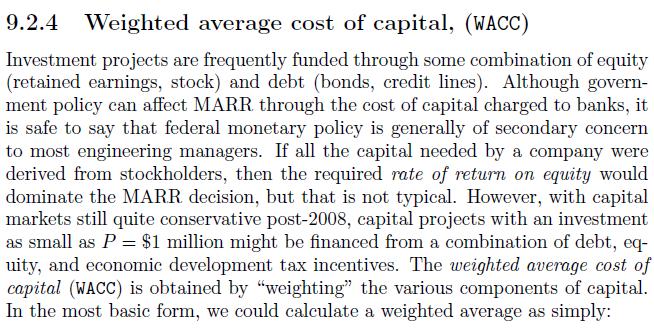As discussed in Section 9.2.4, WACC is popular and routinely used in a variety of capital budgeting
Question:
As discussed in Section 9.2.4, WACC is popular and routinely used in a variety of capital budgeting situations. It seems, though, that the factor is not without controversy. What are some of the controversies and what cautions would you offer to avoid mis-use?


Fantastic news! We've Found the answer you've been seeking!
Step by Step Answer:
Related Book For 

Question Posted:





